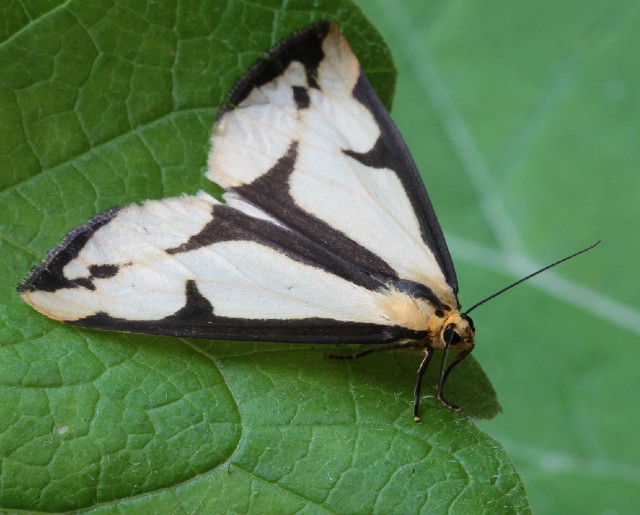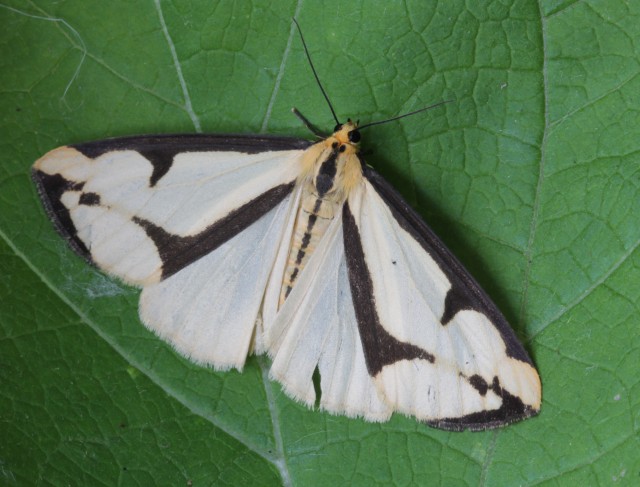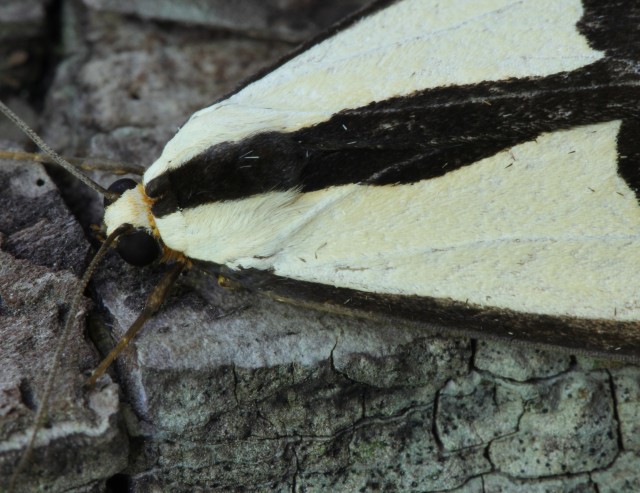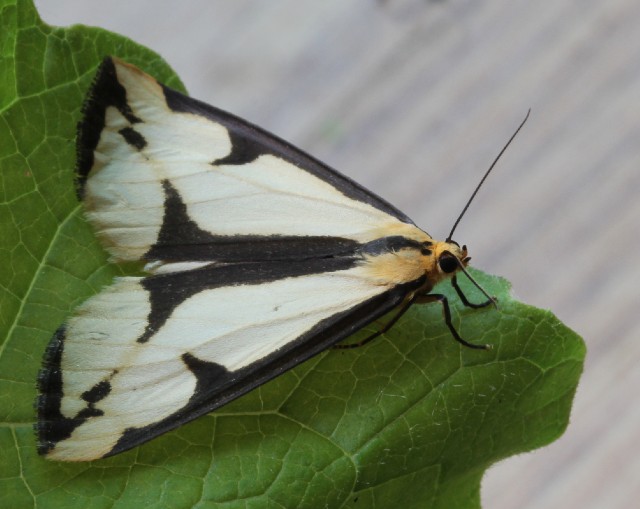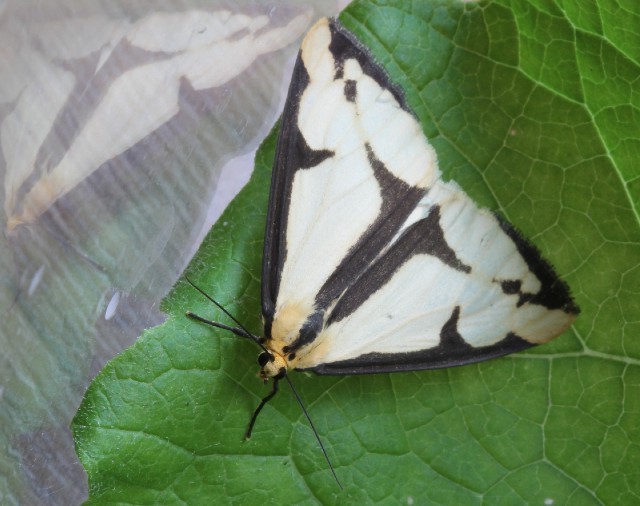I saw this cool creature while hiking in Cuyahoga Valley National Park. It is noted for the striking upside-down cross pattern on its forewings. Because of this design, some people refer to it as the “Crusader Moth.”
This is a member of the Tiger Moth family (as is the Woolly Bear/Isabella Tiger Moth). Typically it inhabits deciduous forests and the fields adjacent to them where their black, bristly larvae feed on a wide variety of plants.
It may be fitting that the Clymene Moth looks like a Star Trek badge, because it boldly goes everywhere, day and night. Unlike the nocturnal habits of most moths, it does not shy away from sunshine. But like other moths, it is attracted to lights at night.
The two smooth black antennae allow them to sense and smell the species in their area. Like like other moths, they communicate through pheromones and chemical smells. With a wingspan of 1-1/2 to 2 inches, this is not an especially large moth.
The Clymene Moth is native to eastern North America. Adults seem to prefer moist areas like wetlands, where they visit flowers and use their long proboscises (tongues) to drink nectar. I most often find it in wooded areas adjacent to creeks.
This is always a neat insect to encounter during the summer months, when it is most active.

